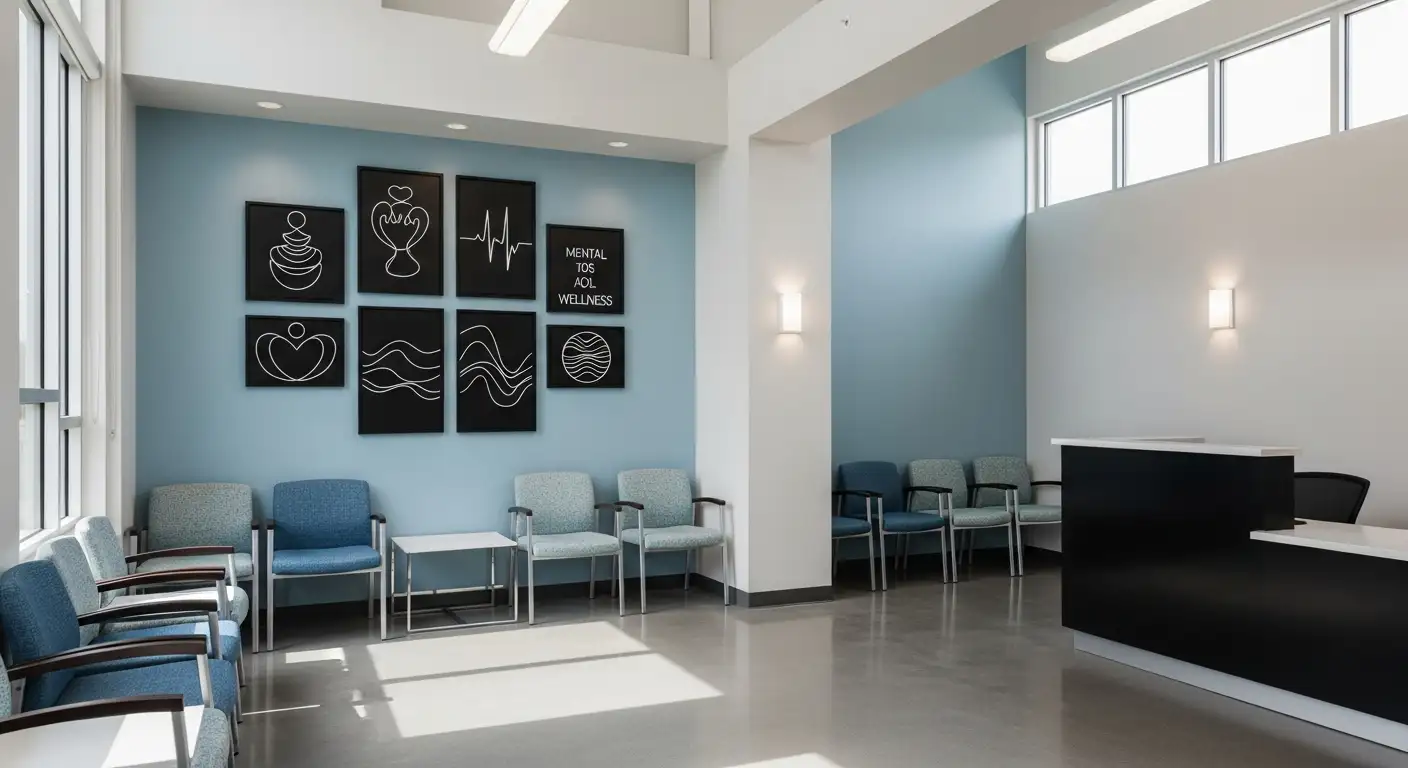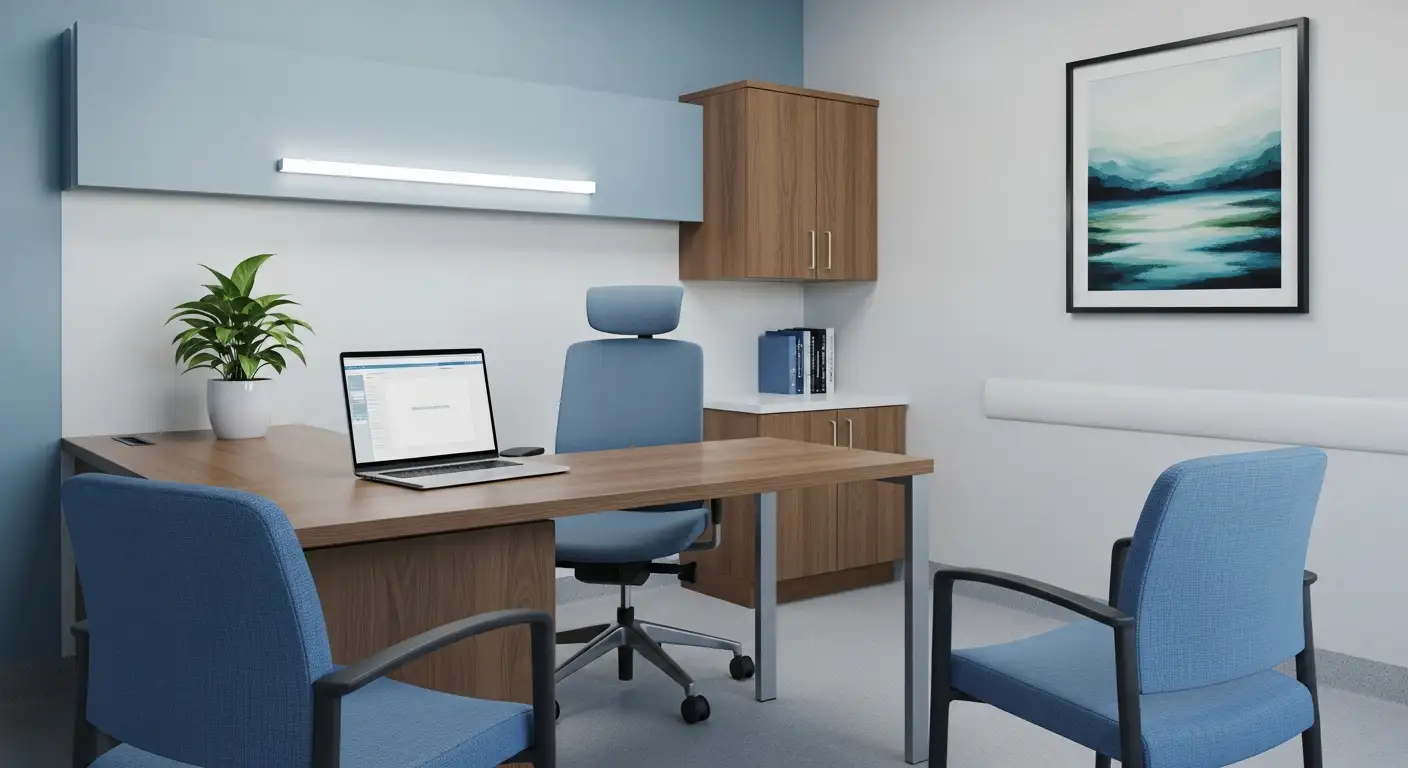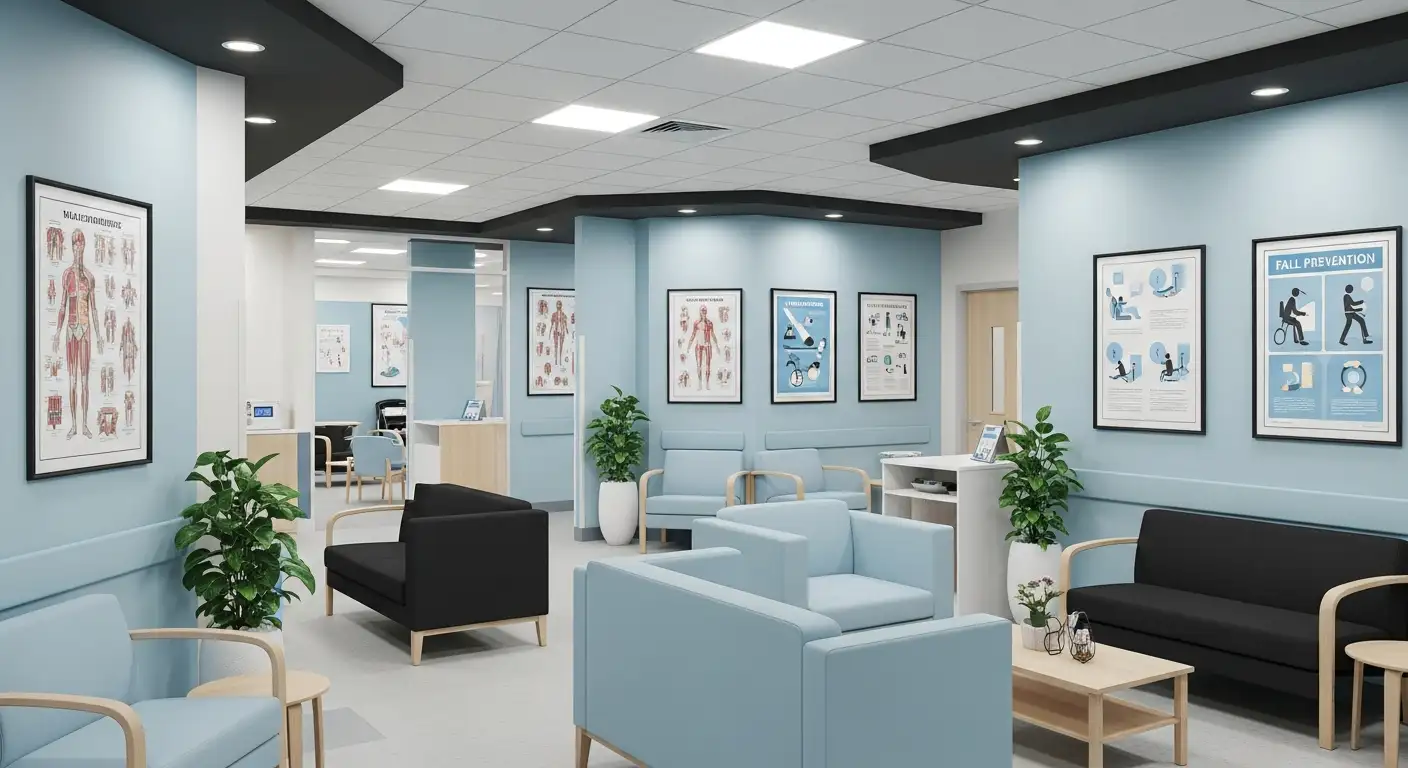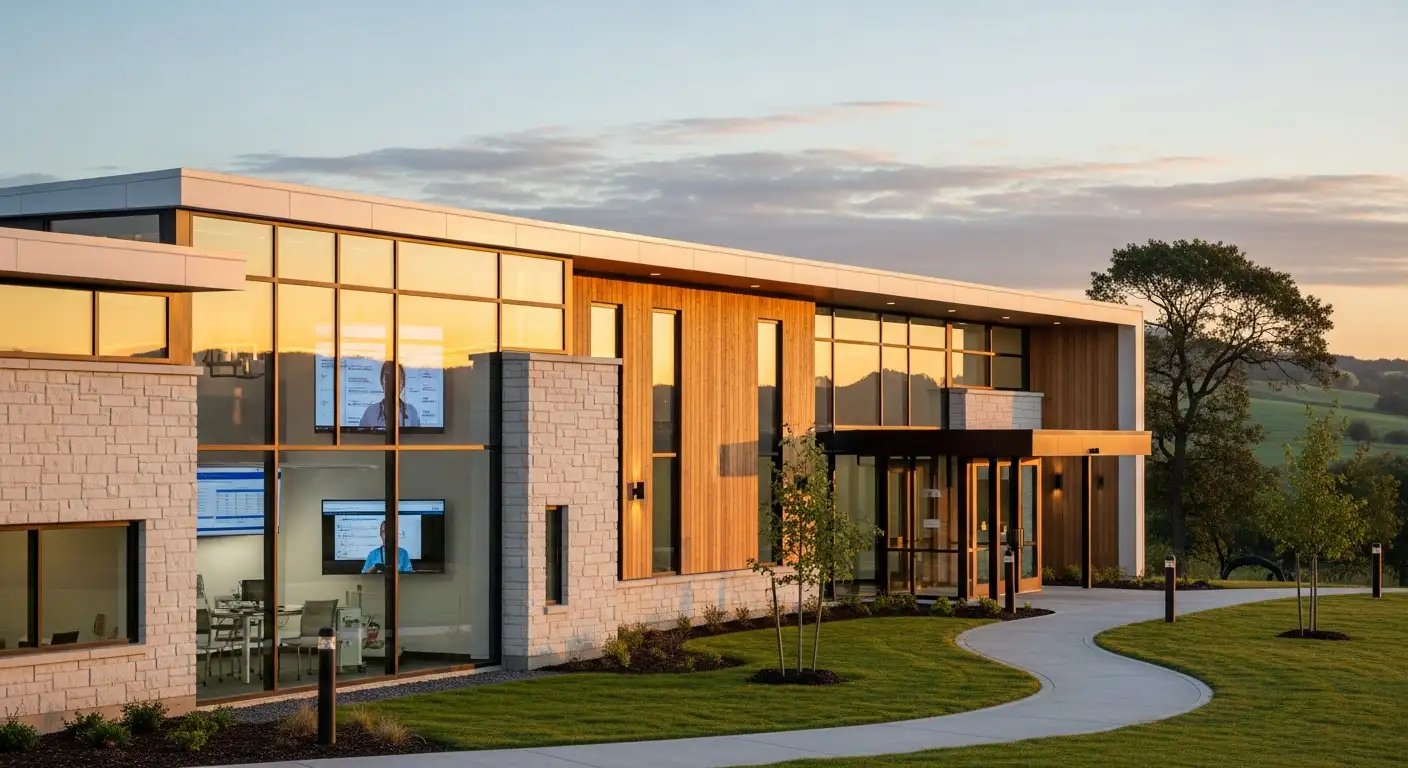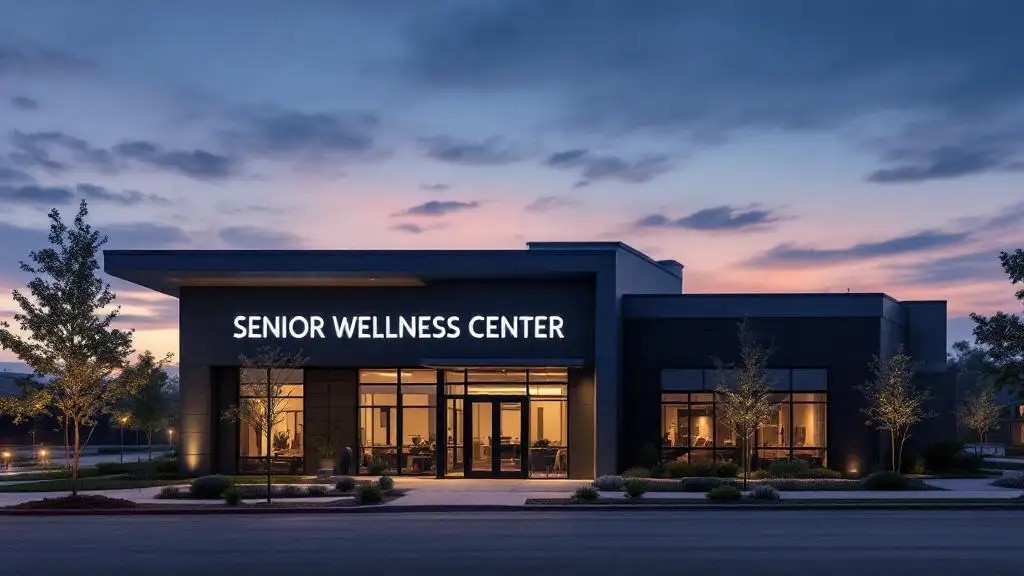Understanding Behavioral Health Challenges in Assisted Living
As the global population ages, assisted living settings face an escalating challenge of addressing complex behavioral health needs among residents. Mental disorders such as neurocognitive disorders, depression, schizophrenia, and substance use disorders are increasingly prevalent in older adults. Tailored interventions and integrated treatment approaches are essential to improve quality of life and health outcomes in these settings.
The Growing Burden of Mental Disorders Among Older Adults in Assisted Living

What is the prevalence of mental disorders in older adults?
As the global population ages, there is a significant rise in the number of older adults experiencing mental health conditions. Approximately a substantial portion of this demographic in assisted living facilities faces various mental disorders, reflecting a widespread and growing health challenge.
What types of mental health conditions are common in assisted living?
Older adults in assisted living commonly experience neurocognitive disorders such as Alzheimer's disease, alongside conditions like depression, schizophrenia, and substance use disorders. These disorders frequently co-occur and contribute to complex health profiles requiring comprehensive care.
How do mental disorders impact residents' well-being?
Mental health conditions severely affect residents' quality of life, leading to increased healthcare needs and reduced independence. The presence of behavioral disorders often correlates with additional medical issues like diabetes and heart disease, and tends to shorten life expectancy by up to two decades compared to peers without these conditions. The mental health burden also exacerbates social isolation and loneliness, further diminishing psychological and physical well-being.
Given these challenges, assisted living communities must prioritize integrated, multidisciplinary approaches that address both mental and physical health to enhance residents' overall well-being.
Comprehensive Treatment Services for Substance Abuse and Addiction in Assisted Living
What Are the Comprehensive Treatment Services Available for Substance Abuse and Addiction?
Substance abuse treatment in assisted living settings involves a broad spectrum of evidence-based services designed to meet the diverse needs of individuals struggling with addiction. Central to these services is medical detoxification, which ensures safe withdrawal from substances under clinical supervision. This is often paired with medication-assisted treatment (MAT), using FDA-approved medications such as methadone, buprenorphine, and naloxone to reduce cravings and prevent relapse.
Behavioral therapies are a cornerstone of treatment, encompassing cognitive-behavioral therapy, counseling, and skills training that help individuals address psychological and social factors contributing to addiction. Treatment modalities range from outpatient and intensive outpatient programs to residential care and sober living environments, providing flexibility based on the severity of the addiction and personal circumstances.
Recovery support services complement clinical care, including peer support, community engagement activities, and aftercare planning. These services are crucial in ensuring long-term recovery and managing co-occurring mental health disorders, which are common among individuals with substance use issues.
Tailored treatment options address specific populations such as adolescents, pregnant or parenting women, and individuals involved in court-ordered programs. Many services are accessible both in-person and via telehealth, enhancing reach and adaptability to individual preferences and mobility challenges often encountered in assisted living.
By integrating medical, behavioral, and supportive interventions, assisted living facilities can offer comprehensive care that promotes recovery, resilience, and improved quality of life for residents facing substance abuse and addiction.
Addressing Co-Occurring Mental Health and Substance Use Disorders
How do treatment services address co-occurring mental health issues alongside addiction?
Treatment for co-occurring mental health and substance use disorders adopts an integrated approach that simultaneously targets both conditions. This model often features coordinated, co-located, or fully integrated care settings where multidisciplinary teams collaborate closely to streamline patient support.
What is the role of screening and assessment for dual diagnoses?
Comprehensive screening and assessment procedures are fundamental to identifying individuals with both mental health and substance use disorders. Routine evaluations in primary care or behavioral health clinics help ensure early detection and appropriate referrals to integrated treatment programs.
What evidence-based therapies are used for co-occurring disorders?
Behavioral therapies such as cognitive-behavioral therapy (CBT), dialectical behavior therapy (DBT), and motivational enhancement therapy are widely employed. Pharmacotherapy complements these interventions by managing psychiatric symptoms or aiding in substance use cessation. Support groups and psychosocial interventions further reinforce recovery by promoting coping skills and social engagement.
What are the outcomes of integrated care?
Integrated treatment models significantly improve patient outcomes by reducing substance use and psychiatric symptoms. These approaches show higher recovery rates, fewer hospitalizations, and improved quality of life compared to fragmented care. Tailored treatment plans that include detoxification, inpatient, and outpatient care address varying patient needs effectively.
| Topic | Approach | Details |
|---|---|---|
| Integration of treatment | Coordinated and co-located care | Multidisciplinary teams provide combined mental health and addiction services in the same setting |
| Screening and assessment | Routine dual diagnosis screening | Early identification through standardized tools in primary and behavioral health care |
| Evidence-based therapies | CBT, DBT, motivational therapy | Structured psychosocial treatments supported by medication management and support groups |
| Outcomes of integrated care | Improved recovery and reduced relapse | Lower hospitalization rates, enhanced quality of life, tailored to individual needs |
Common Forms of Addiction Treated in Assisted Living Settings
What forms of addiction are commonly treated in comprehensive service programs?
Comprehensive service programs in assisted living settings often address a range of substance use disorders among older adults. Common substances include alcohol, opioids, stimulants, and prescription medications, which are prevalent in this age group. In addition to these, behavioral addictions such as gambling and gaming disorders are also frequently addressed, recognizing the broad spectrum of addictive behaviors that affect mental health.
Substance use and behavioral addictions addressed
- Substance Use Disorders: Alcohol abuse remains a primary concern, followed by opioid misuse and dependency on prescription drugs. Stimulant addiction, though less common, is also treated.
- Behavioral Addictions: Gambling and gaming addictions receive specialized attention due to their psychological and social impacts.
Therapeutic approaches and peer support
Treatment in these programs employs a multidisciplinary approach. Pharmacotherapy options, including medications to manage withdrawal and cravings, are combined with behavioral therapies such as cognitive-behavioral therapy (CBT) and family therapy. These therapies focus on modifying harmful behaviors and improving coping skills. Peer support groups like Alcoholics Anonymous and other recovery communities form a vital part of ongoing support for sustained abstinence.
Levels of care available
Assisted living facilities and affiliated programs offer various levels of care tailored to the individual’s needs. These range from inpatient services with intensive monitoring and therapy to outpatient programs that allow for community integration. Aftercare planning, including relapse prevention strategies and social support, is integral to long-term recovery.
This integrated treatment model aims to promote recovery, enhance quality of life, and reduce relapse rates by addressing both the medical and psychosocial aspects of addiction in older adults.
Multidisciplinary Team Care Models for Behavioral Health in Assisted Living
What is the role of multidisciplinary teams in assisted living behavioral health care?
Multidisciplinary teams play a crucial role in delivering effective behavioral health care within assisted living environments. These teams typically include mental health professionals, medical staff, social workers, and sometimes peer support specialists who collaborate to address the complex needs of older adults. By combining expertise across disciplines, they ensure comprehensive care that attends not only to mental disorders but also underlying physical and social factors.
How are comprehensive assessment processes implemented?
Comprehensive assessments involve routine screening and early identification of mental health and substance use conditions. These assessments evaluate cognitive function, mood, behavior, social support, and medical comorbidities. Tools and protocols from evidence-based resources, such as those provided by the Center of Excellence for Behavioral Health in Nursing Facilities, guide staff in conducting thorough evaluations that inform individualized care plans.
What clinical management strategies are used?
Clinical management in assisted living focuses on integrating pharmacotherapy—such as antidepressants and antipsychotics—with behavioral and psychosocial interventions like cognitive-behavioral therapy and social skills training. Tailoring treatment plans to the unique needs of older adults helps improve symptoms and promotes resilience. Additionally, attention to prevention through vascular risk factor management and physical activity supports cognitive health.
How is coordination of mental, physical, and social health services achieved?
Effective coordination involves intensive outreach and seamless communication between primary care providers, mental health specialists, social services, and community resources. Integrated care models emphasize partnership among these sectors to deliver holistic support. This includes linking residents to social engagement opportunities, managing chronic illnesses alongside mental health conditions, and addressing social determinants like isolation and stigma, thereby improving overall quality of life.
| Aspect | Description | Benefits |
|---|---|---|
| Multidisciplinary Teams | Diverse professionals collaborating on care | Addresses complex needs comprehensively |
| Comprehensive Assessment | Routine screening and evaluation with validated tools | Informs effective, personalized treatment planning |
| Clinical Management | Combination of medication and psychosocial therapies | Enhances symptom control and promotes recovery |
| Service Coordination | Integrated mental, physical, and social health services | Improves outcomes and reduces fragmented care |
Behavioral and Psychosocial Interventions: Enhancing Treatment Outcomes
What Are Cognitive-Behavioral Therapies?
Cognitive-behavioral therapies (CBT) play a pivotal role in treating mental health conditions among older adults. CBT helps individuals identify and change negative thought patterns, improving mood and behavior. This intervention is especially effective in managing depression and anxiety, facilitating better coping mechanisms in aging populations.
How Does Social Skills Training Contribute?
Social skills training assists older adults in enhancing communication, building relationships, and navigating social situations. This is crucial to reduce feelings of isolation and loneliness, which are common among the elderly. Strengthening social interactions fosters emotional support networks and promotes mental wellness.
What Is the Role of Community Engagement?
Community engagement techniques encourage participation in social activities, volunteerism, and group events. Such involvement not only combats isolation but also instills a sense of purpose, resilience, and wisdom in older adults. Programs often include activities tailored to seniors' interests and capabilities, boosting their overall quality of life.
Together, these behavioral and psychosocial interventions offer a comprehensive approach to mental health care, enhancing treatment outcomes by addressing emotional, social, and cognitive needs. By fostering an integrated support system, these approaches contribute significantly to improved well-being and reduced stigma among older individuals.
Positive Aging Strategies to Mitigate Stigma and Promote Well-being
How can resilience building aid older adults in managing mental health challenges?
Resilience building equips older adults with coping skills to navigate life’s challenges and mental health issues such as depression or anxiety. By fostering adaptability and emotional strength, resilience helps mitigate stress and enhances overall mental well-being. Techniques may include mindfulness practices, stress management workshops, and supportive counseling, all designed to empower older individuals to face adversity with greater ease.
Why is promoting purpose in life important for older adults?
A strong sense of purpose fosters motivation, direction, and meaning, which are crucial factors in mental health and cognitive vitality among older adults. Activities like volunteering, mentorship, or engaging in hobbies can provide this sense of purpose, helping to reduce feelings of loneliness and depression.
How does enhancing social engagement contribute to well-being?
Social engagement combats isolation—a common risk factor for mental illness in aging populations. Encouraging participation in community groups, social clubs, or peer support networks strengthens social ties and revitalizes cognitive function. Creating opportunities for meaningful interactions helps older adults maintain social identity and emotional connection.
Implementing these positive aging strategies supports mental health by reducing stigma and fostering an environment where older adults feel valued and connected. These approaches not only promote individual well-being but also challenge ageism by highlighting the vitality and contributions of older adults in society.
Addressing Social Determinants of Mental Health in Assisted Living Contexts
What is the impact of ageism on mental health in assisted living?
Ageism significantly affects mental health outcomes among older adults in assisted living. Negative stereotypes and discrimination can lead to social exclusion, reduced self-esteem, and increased depression and anxiety. Ageism often results in stigmatization, which discourages older adults from seeking mental health support and contributes to poorer health outcomes.
How do workforce shortages influence mental health care?
Workforce shortages in behavioral health and geriatrics limit access to timely and comprehensive mental health services. Assisted living facilities may struggle to employ enough trained staff to address the complex mental health and social needs of residents. This scarcity can lead to fragmented care and reduced quality, exacerbating mental health challenges.
What role do social isolation and loneliness play?
Social isolation and loneliness are common in assisted living settings due to separation from family and familiar social networks. These conditions are linked to increased risks of depression, cognitive decline, and substance use disorders. Loneliness undermines resilience, prevents community engagement, and can lead to a downward spiral in overall well-being.
What strategies can address social determinants in assisted living?
Effective approaches include implementing multidisciplinary team care that integrates mental, physical, and social health services. Facilities should foster social engagement through group activities and community involvement to reduce isolation. Staff training programs, such as those offered by the Center of Excellence for Behavioral Health in Nursing Facilities, improve trauma-informed care and behavioral health management. Addressing workforce gaps by expanding training and diversifying staff ensures adequate support. Policy reforms promoting integrated care models and payment structures supporting comprehensive services further enhance service delivery.
By proactively addressing ageism, bolstering workforce capacity, and reducing social isolation, assisted living environments can significantly improve mental health outcomes and enhance residents’ quality of life.
Prevention Efforts Targeting Cognitive Decline and Dementia
How can education and physical activity help prevent cognitive decline?
Engaging in continuous education and regular physical activity plays a significant role in delaying or reducing the onset of cognitive decline and dementia. Education stimulates the brain, promoting cognitive reserve that helps withstand age-related changes. Physical activity improves blood flow to the brain and supports overall neural health, contributing to resilience against neurodegenerative processes.
What is the importance of managing vascular risk factors?
Managing vascular risk factors—such as hypertension, diabetes, high cholesterol, and obesity—is critical in preventing cognitive decline. These risk factors contribute to vascular damage that can impair brain function. Proper control through medication, diet, and lifestyle adjustments helps maintain healthy brain circulation and reduces the risk of vascular dementia.
How does longitudinal modification of risk factors contribute to dementia prevention?
Long-term, consistent modification of risk factors—addressing lifestyle habits, medical conditions, and social determinants—helps reduce overall dementia risk. This approach includes continuous monitoring and intervention over years or decades to minimize cumulative damage to brain health.
The combined focus on education, physical activity, and vascular health management forms a comprehensive strategy that encourages positive aging and reduces the burden of neurocognitive disorders in older adults.
Advances in Diagnostics: Biomarkers, Neuroimaging, and Genetics
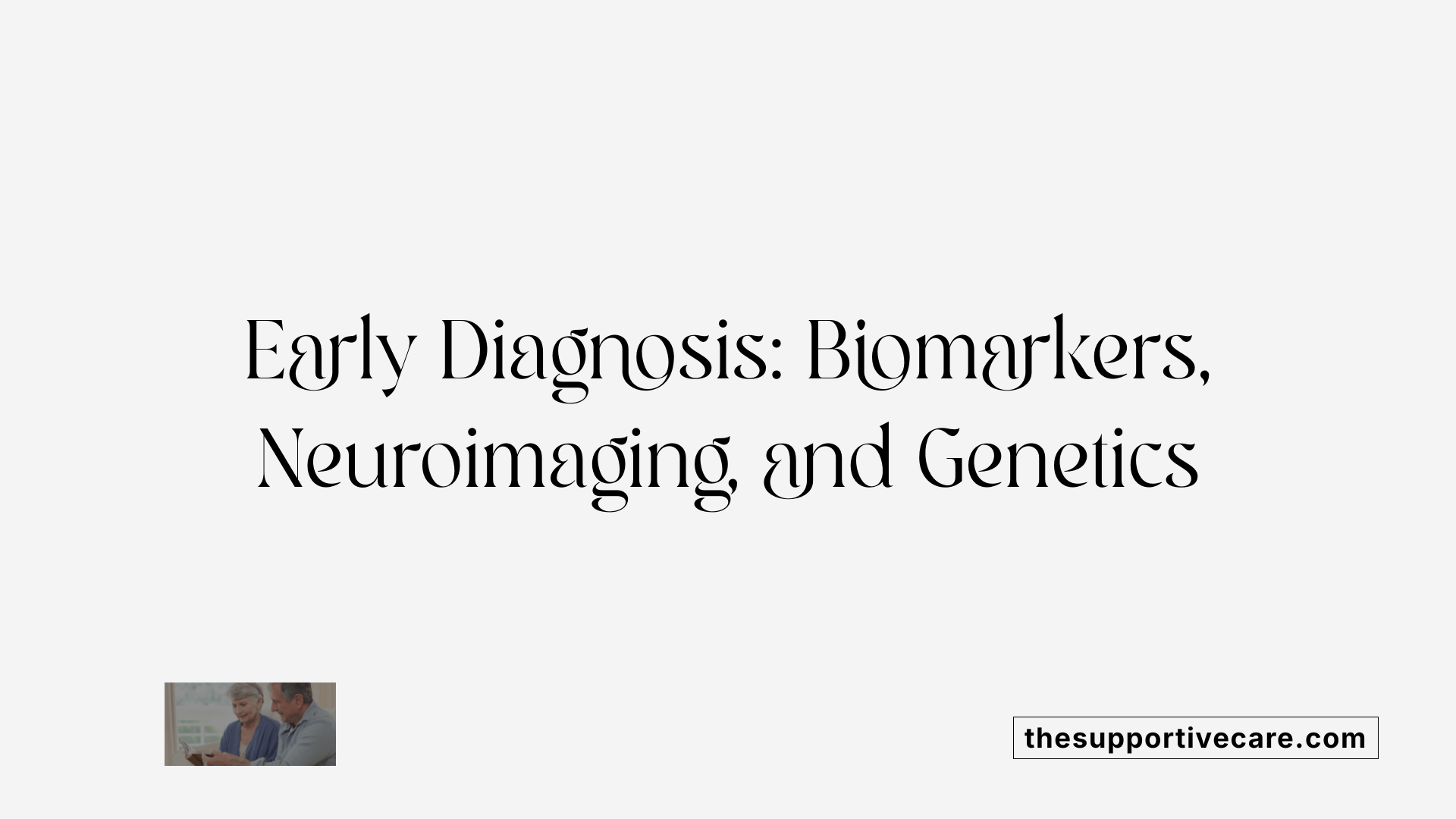
How Are Biomarkers, Neuroimaging, and Genetics Improving Early Diagnosis of Neurocognitive Disorders?
Early diagnosis of neurocognitive disorders has greatly benefited from technological and scientific advancements. Biomarkers — measurable biological indicators found in blood or cerebrospinal fluid — allow physicians to detect subtle changes linked to cognitive decline before symptoms become pronounced.
Neuroimaging techniques like MRI and PET scans visualize structural and functional brain changes, providing critical insights into the progression of diseases such as Alzheimer's. These scans help identify amyloid plaques and neurofibrillary tangles, hallmark features of Alzheimer's disease.
Genetic testing further refines diagnosis by revealing inherited risk factors that predispose individuals to neurodegenerative conditions. Together, these tools enable earlier intervention and more accurate prognosis.
What Is the Role of Personalized Treatment Approaches in Managing Neurocognitive Disorders?
Advances in diagnostic technologies facilitate tailoring treatments to the individual's unique biological makeup. Personalized medicine leverages biomarker profiles and genetic information to design targeted therapies, optimizing drug selection and dosing.
For instance, some genetic subtypes may respond better to certain medications or behavioral interventions, enhancing treatment efficacy and minimizing side effects. Personalized care also involves continuous monitoring through biomarkers and neuroimaging to adapt strategies dynamically based on disease progression.
How Do These Advances Impact the Management of Alzheimer's Disease?
Alzheimer's disease management has been revolutionized by these diagnostic strides. Early detection via neuroimaging and biomarker analysis can delay symptom onset through timely lifestyle modifications and pharmacotherapy.
Moreover, emerging disease-modifying drugs specifically targeting pathological proteins identified through biomarkers promise to slow cognitive deterioration. Personalized treatment plans improve quality of life by addressing the distinct needs and progression patterns of each patient.
Overall, the integration of biomarkers, neuroimaging, and genetics is paving the way for more precise, proactive, and effective neurocognitive disorder management, particularly for Alzheimer's disease.
Pharmacotherapy and Emerging Treatments for Older Adults
How are antipsychotics and antidepressants used in treating mental health disorders in older adults?
In the treatment of mental health disorders among older adults, pharmacotherapy often includes the use of antipsychotics and antidepressants. These medications help manage symptoms related to schizophrenia, depression, and other neuropsychiatric conditions. Careful prescription is essential to balance therapeutic benefits with potential side effects, as older adults may have differing sensitivities and comorbidities.
What role do emerging disease-modifying drugs play?
Emerging disease-modifying drugs are gaining attention, especially for neurocognitive disorders such as Alzheimer's disease. These treatments aim to slow or alter the disease progression rather than only address symptoms. Advances in biomarkers, genetics, and neuroimaging enable earlier diagnosis, facilitating timely intervention with these treatments to improve outcomes.
Why is combining medication with psychosocial interventions recommended?
Combining pharmacotherapy with behavioral and psychosocial interventions—like cognitive-behavioral therapy, social skills training, and community engagement—provides a holistic approach. This integrated method addresses not just symptoms but also enhances resilience, social connectedness, and overall well-being. Tailored psychosocial support can improve medication adherence and maximize treatment effectiveness.
Together, these strategies in medication and psychosocial care form a comprehensive approach to mental health management among older adults, supporting both clinical improvement and quality of life.
Community-Based and Collaborative Care Models: Evidence and Impact
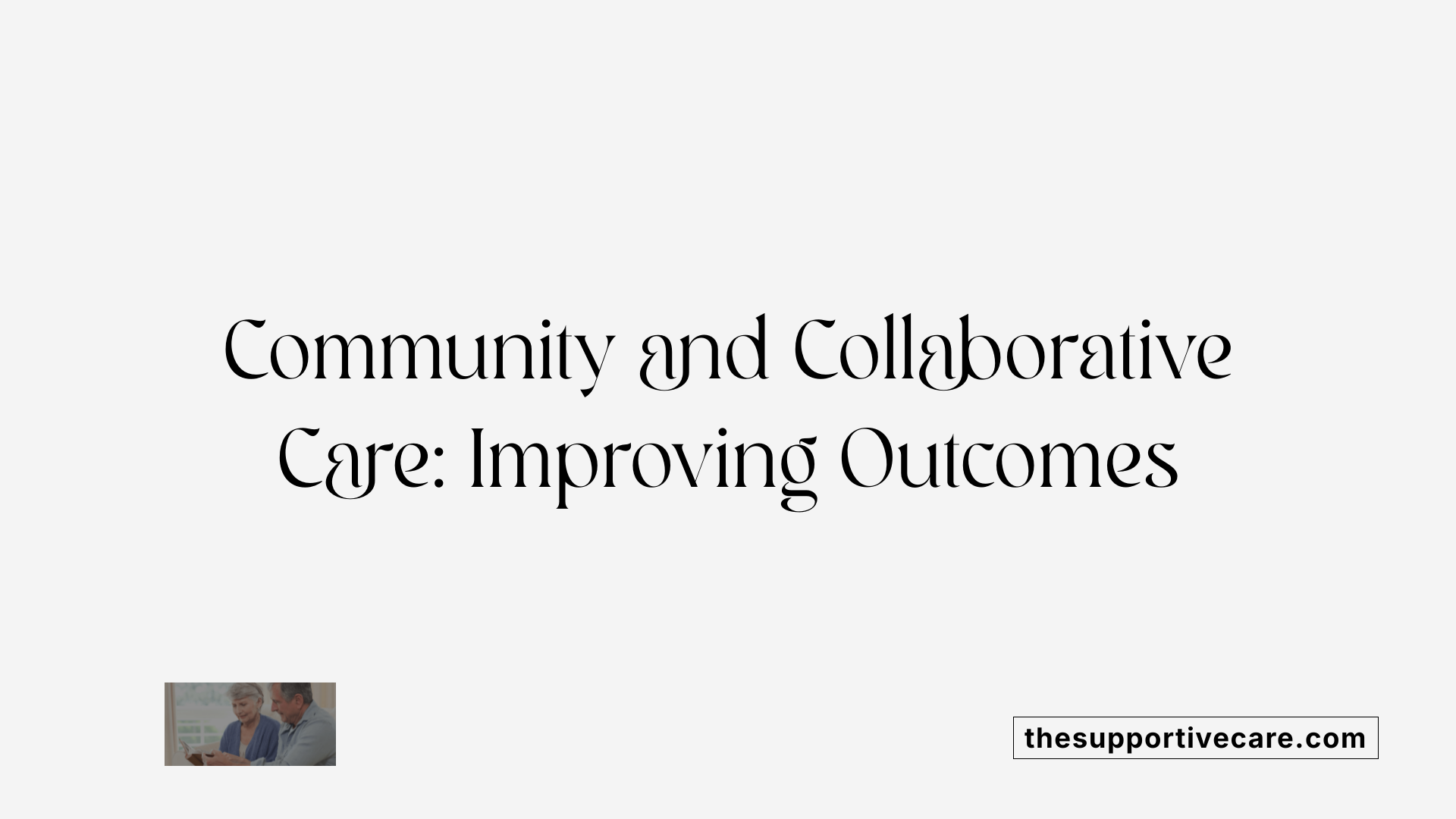
How effective are integrated care models in behavioral health?
Integrated care models, which combine general medical, mental health, and substance use disorder services, have demonstrated strong effectiveness. These models improve clinical outcomes by promoting early identification, referral, and continuous treatment within a single coordinated framework. The Psychiatric Collaborative Care Model (CoCM), especially in primary care settings, shows robust evidence for improving outcomes in depression and anxiety. Its adoption by states with Medicaid reimbursement further supports integrated and accessible behavioral health care.
Do these models reduce relapse rates and mortality?
Yes. Community-based and collaborative care models contribute to reducing relapse rates and mortality among individuals with behavioral health disorders. By providing continuous, integrated support, these models address not only mental health but also physical health and social needs, which often complicate recovery. Intensive outreach and multidisciplinary team care help maintain treatment adherence and early intervention, which are critical in lowering relapse and mortality risks.
How do collaborative care models help address treatment gaps, particularly in underserved populations?
These models effectively bridge treatment gaps by expanding access to care in underserved communities. Community treatment programs for severe mental health disorders and integrated-care models operate in locations such as primary care clinics and nursing facilities, where they reach populations that might otherwise face barriers due to fragmented services or workforce shortages. Telehealth and mobile health clinics further extend reach, especially in rural or resource-poor areas. These approaches emphasize culturally competent care, reduce stigma, and improve coordination across service systems, making behavioral health treatment more equitable and comprehensive.
| Aspect | Description | Example/Detail |
|---|---|---|
| Integrated Care Models | Combine mental, physical, and social health services for holistic treatment | Psychiatric Collaborative Care Model (CoCM) with Medicaid reimbursement |
| Reduction of Relapse & Mortality | Continuous, team-based care lowers relapse and mortality rates through early intervention | Multidisciplinary outreach and comprehensive assessment |
| Addressing Treatment Gaps | Extend access via community programs, telehealth, mobile clinics targeting underserved populations | Certified Community Behavioral Health Centers (CCBHCs), mobile health clinics |
Research and Innovation: Personalizing Behavioral Health Interventions
Medications to Mitigate Cognitive Decline
Recent advances in pharmacology focus on developing medications that can slow or mitigate cognitive decline, particularly in neurocognitive disorders such as Alzheimer's disease. Emerging disease-modifying drugs are now being combined with psychosocial interventions tailored specifically for older adults, aiming to improve overall cognitive function and quality of life.
Reducing Suicide Risk
Efforts to reduce suicide risk involve both pharmacotherapy and behavioral strategies. Research continues into medications that target underlying mental health conditions effectively while minimizing side effects. Behavioral interventions are also personalized to enhance coping strategies and resilience, crucial for vulnerable populations such as older adults or those with severe mental illnesses.
Tailoring Interventions to Individual Response
Personalization of behavioral health interventions is crucial because individuals vary widely in their responses to treatments. Advances in biomarkers, neuroimaging, and genetics are enabling earlier diagnosis and more customized treatment plans. By understanding individual variability, healthcare providers can optimize therapy combinations and delivery methods, improving outcomes and reducing relapse rates.
The incorporation of these research developments into clinical practice is vital for addressing the significant burden of behavioral health disorders and cognitive decline among diverse populations. Continued investment in personalized approaches promises to enhance effectiveness and patient well-being.
The Burden and Societal Impact of Behavioral Health and Substance Use Disorders
How prevalent are behavioral health and substance use disorders?
Behavioral health and substance use disorders are widespread across various demographics. In the United States alone, at least 18.1% of adults experience some form of mental disorder, while 8.4% live with a substance use disorder. Importantly, approximately 3% of the population suffers from co-occurring mental health and substance use disorders, which complicate treatment and recovery efforts.
What are the economic costs associated with these disorders?
The societal burden of behavioral health and substance use disorders is immense, with healthcare costs estimated at $293 billion in 2012 in the U.S. These costs stem from medical care, lost productivity, and the need for extensive social services. Co-occurring disorders further exacerbate these expenses, highlighting the need for integrated care models that can efficiently manage these complex cases.
How do these disorders impact health outcomes and mortality?
Individuals with severe behavioral health conditions often develop or have comorbid medical issues such as diabetes and heart disease. This overlap contributes to significantly shortened lifespans, with affected individuals dying up to two decades earlier than the general population. The interrelation of mental and physical health challenges underscores the urgency of comprehensive, coordinated care to improve quality of life and longevity.
Fragmentation in Care Systems and Its Effects on Treatment
How does the separation of medical, mental health, and substance use services affect patient care?
Healthcare systems for medical, mental health, and substance use disorders often operate independently, creating a fragmented landscape for patients. This separation means that patients must navigate different providers, treatment plans, and care settings, which complicates holistic management of their health needs, particularly for those who experience co-occurring disorders.
What cultural and regulatory barriers contribute to fragmentation?
The fragmentation is reinforced by distinct cultures within each care system, varying regulations, and different financial incentives. For example, medical providers may not be trained to address behavioral health issues, while mental health services often follow separate regulatory frameworks. Funding mechanisms like fee-for-service typically do not support integrated care, further deepening the divide.
What are the consequences of fragmentation for patient outcomes?
This disconnected approach often leads to poor communication among providers, delayed or missed diagnoses, and inconsistent treatment. Patients with severe behavioral health conditions are at risk of developing or worsening medical issues, such as diabetes and heart disease, and tend to have shorter lifespans—sometimes dying up to two decades earlier than the general population. Moreover, fragmented care contributes to treatment gaps, increased relapse rates, and elevated healthcare costs.
In summary, the fragmentation of care systems creates significant barriers for effective treatment and management of behavioral health and medical conditions, emphasizing a critical need for integrated, interdisciplinary models.
Barriers to Effective Behavioral Health Service Delivery in Assisted Living
What workforce shortages affect behavioral health services in assisted living?
A significant barrier in assisted living behavioral health care is the shortage of a well-distributed and sufficiently sized behavioral health workforce. This scarcity limits the ability to deliver timely and comprehensive mental health and substance use disorder treatment for older adults. Staffing challenges include not only the number of professionals available but also the lack of specialized training tailored to the complex needs of the elderly population.
How do inefficient payment models impede service delivery?
Current payment structures, such as fee-for-service models, often do not support integrated and coordinated care approaches suited for behavioral health in assisted living settings. These models can discourage collaboration between providers and reduce incentives for comprehensive outreach, multidisciplinary teams, and holistic service coordination that combine mental, physical, and social health support—all crucial for effective care for older adults.
In what ways does system fragmentation hinder effective care?
Behavioral health care systems frequently operate separately from general medical and social services, with differing regulations, cultures, and incentives. This fragmentation leads to disjointed care, where residents in assisted living may struggle to navigate multiple unconnected providers. Such systemic divisions hinder seamless coordination needed to address the complex, co-occurring disorders common among older adults, contributing to gaps in care and poorer health outcomes.
Through addressing these barriers—by expanding and training the workforce, reforming payment systems to encourage integrated care, and fostering organizational collaborations—assisted living facilities can improve their delivery of behavioral health services and overall resident well-being.
Evidence-Based Treatment Models: Collaborative and Integrated Care
What Are Collaborative-Care Models in Primary Care?
Collaborative-care models integrate behavioral health services within primary care settings. This approach emphasizes routine screening, early identification, referral, and treatment of mental health and substance use disorders. It supports holistic patient care by coordinating physical and mental health services under one roof, reducing treatment gaps and improving outcomes, especially for depression and anxiety.
How Do Integrated Mental Health Clinics Function?
Integrated mental health clinics combine behavioral health and general medical care, enabling seamless communication and coordinated treatment plans. These models strengthen service delivery by bridging fragmented systems, facilitating comprehensive assessment and management, and utilizing clinical outreach and coordination among specialists and social services. This integration increases treatment accessibility and effectiveness.
What Are Community Treatment Programs for Severe Mental Health Disorders?
Community treatment programs are designed to support individuals with severe mental health conditions within their local environments. They typically involve assertive community treatment (ACT), intensive outpatient care, and peer support, fostering recovery and social engagement. These programs improve outcomes by maintaining patients in least restrictive settings, reducing hospitalizations, and promoting continuity of care.
Why Are These Models Effective?
- Improved access: By integrating behavioral health into familiar health settings, patients face fewer barriers.
- Enhanced coordination: Multidisciplinary teams collaborate to deliver comprehensive care.
- Tailored interventions: Treatment can be customized to individual needs, including pharmacotherapy combined with psychosocial support.
- Reduced relapse and mortality: Evidence shows decreases in symptom recurrence and premature deaths.
Examples of Model Implementation
| Model Type | Description | Impact |
|---|---|---|
| Collaborative-Care (CoCM) | Integrated care in primary settings, reimbursed by Medicaid | Improved depression and anxiety outcomes |
| Integrated Mental Health Clinics | Blended services aligning behavioral and physical health | Enhanced care coordination and accessibility |
| Community Treatment Programs | ACT and peer-supported outpatient services | Increased recovery rates and reduced hospital use |
Overall, collaborative and integrated care models represent scalable, evidence-based approaches that address systemic fragmentation and workforce challenges. They improve quality of life and clinical outcomes for individuals with behavioral health conditions, particularly within underserved populations.
Health Information Technology Enhancing Behavioral Health Care
How Do Electronic Health Records Improve Behavioral Health Care?
Electronic health records (EHRs) play a crucial role in enhancing behavioral health care by enabling seamless information sharing across different providers and settings. EHR systems facilitate accurate documentation, timely referrals, and coordinated management of mental health and substance use disorders alongside general medical conditions. This integrated data approach helps providers maintain a comprehensive view of patients’ health, leading to improved clinical decision-making and personalized care plans.
What Impact Has Telehealth Expansion Had on Behavioral Health Services?
Telehealth has significantly expanded access to behavioral health services by breaking down geographic and mobility barriers. Particularly during the COVID-19 pandemic, policy relaxations allowed greater adoption of telehealth for mental health and substance use disorder treatment. Telehealth services have demonstrated outcome measures comparable to in-person care, making it an effective medium for behavioral health interventions, medication management, and follow-up visits. This mode of delivery supports patients who might otherwise face transportation challenges or reside in underserved or rural areas.
In What Ways Does Health IT Improve Coordination and Access?
Health information technology improves coordination of behavioral health by linking general medical, mental health, and substance use care systems that were previously fragmented. Through shared EHR platforms, multidisciplinary teams can communicate efficiently, align treatment goals, and reduce duplication of services. Additionally, telehealth and mobile health clinics enabled by health IT increase timely access to behavioral care. These advancements foster integrated care delivery models that address patients’ holistic needs, including social determinants of health crucial to mental wellness.
| Technology Component | Purpose | Benefits for Behavioral Health |
|---|---|---|
| Electronic Health Records | Centralize patient data | Enhances continuity, reduces errors, supports personalized care |
| Telehealth | Remote delivery of services | Expands access, reduces barriers, effective for rural patients |
| Coordinated IT Systems | Link fragmented care settings | Streamlines communication, fosters integrated care |
Health information technology continues to be a transformative tool, enabling more accessible, efficient, and coordinated behavioral health services, ultimately improving patient outcomes and system sustainability.
Policy Directions to Support Integrated Behavioral Health Care
What new payment models support integrated behavioral health care?
Effective behavioral health care requires payment systems that promote integration rather than fragmentation. Traditional fee-for-service models often fail to incentivize coordinated care across medical, mental health, and substance use services. To address this, policy initiatives emphasize developing new payment models that reward integrated, value-based care, encouraging providers to collaborate and deliver comprehensive treatment. Examples include enhanced Medicaid reimbursement rates for co-occurring disorder treatment and support for collaborative care models in primary care settings.
How is workforce expansion and diversification being addressed?
A critical barrier to effective behavioral health care is the undersized and unevenly distributed workforce. Policies are focusing on expanding and diversifying this workforce through targeted training programs, loan repayment incentives, and the inclusion of community-integrated providers and peer support specialists. Technological solutions like telehealth further support workforce capacity by improving reach and accessibility, especially in underserved areas.
What standards and incentives are implemented to improve care models?
To ensure widespread adoption of evidence-based organizational care models, policies promote establishing clear standards and offering incentives. These include training programs, technical assistance from centers of excellence, and integration requirements for screening and early intervention in primary care. Incentivizing adoption of integrated care approaches ensures better outcomes and reduces treatment gaps, particularly for vulnerable populations.
These policy directions collectively aim to reshape behavioral health systems into cohesive, accessible, and high-quality networks, meeting diverse patient needs across settings and communities.
Supporting Nursing Facilities: The Role of the Center of Excellence for Behavioral Health
How Does the Center of Excellence for Behavioral Health Support Nursing Facilities?
The Center of Excellence for Behavioral Health in Nursing Facilities (COE-NF), established through a collaboration between SAMHSA and CMS, plays a pivotal role in enhancing care quality in nursing facilities. This initiative is designed to provide comprehensive training and technical assistance to nursing facility staff, enabling them to better support residents facing behavioral health challenges.
What Training and Technical Assistance Are Provided?
The COE-NF offers a spectrum of evidence-based training that equips staff with skills in behavior management, trauma-informed care, and mental health education. These trainings facilitate a deeper understanding of complex behavioral health conditions, improve care delivery, and promote recovery-oriented approaches in daily nursing home operations.
What Resources and Toolkits Are Available?
Accessible through the COE-NF online platform are numerous resources, including screening tools and toolkits tailored to mental health care within nursing facilities. The toolkits encompass in-service materials and fact sheets covering various mental health conditions such as depression, bipolar disorder, schizophrenia, and trauma. These resources serve as practical guides to ensure staff are well-prepared to address diverse behavioral health needs.
Which Behavioral Health Conditions Are Targeted?
The program focuses intensively on serious mental illness (SMI), substance use disorder (SUD), and co-occurring disorders (COD), reflecting the complexity and prevalence of these conditions among nursing home residents. Emphasizing integrated care for these populations helps improve quality of life and clinical outcomes, addressing both psychological and physical aspects of health.
Through these targeted supports, the COE-NF reinforces nursing facility capabilities to deliver holistic, person-centered behavioral health care, fostering environments where residents with complex mental health needs can thrive.
Integrated Behavioral Health Care in Primary and Assisted Living Settings
How does routine screening improve behavioral health in older adults?
Routine screening in primary care and assisted living settings is fundamental for the early identification of mental health and substance use disorders among older adults. Tools and evidence-based screening protocols allow healthcare providers to detect issues such as depression, neurocognitive disorders, and substance misuse before they escalate, facilitating timely interventions.
What role does early identification and referral play?
Early identification leads to prompt referral to appropriate behavioral health services, which significantly improves clinical outcomes. Integrated care models support seamless referrals from primary care to mental health specialists, ensuring coordinated treatment plans that address the complex needs of aging patients with co-occurring conditions.
Why is a holistic treatment approach important in these settings?
A holistic approach combines mental, physical, and social health services, recognizing the interplay of these domains in older adults’ well-being. Incorporating behavioral and psychosocial interventions such as cognitive-behavioral therapy, social skills training, and community engagement enhances resilience and mitigates stigma. Pharmacotherapy is tailored alongside these therapies to manage conditions effectively.
Integrated behavioral health care models emphasize coordination among multidisciplinary teams, comprehensive assessments, and intensive outreach. This framework is vital in assisted living environments where residents often face complex health challenges compounded by social determinants like isolation and ageism.
These integrated systems use electronic health records and telehealth technologies to enhance access and communication among providers, streamlining care delivery. Initiatives like the Psychiatric Collaborative Care Model (CoCM) have demonstrated effectiveness, particularly when Medicaid reimbursement supports such models, improving accessibility and outcomes.
Overall, integrating behavioral health care in primary and assisted living settings fosters earlier detection, coordinated treatment, and holistic support, improving mental health outcomes among older adults.
The Psychiatric Collaborative Care Model and Its Application

How does the Psychiatric Collaborative Care Model improve depression and anxiety outcomes?
The Psychiatric Collaborative Care Model (CoCM) integrates mental health treatment into primary care settings. This model emphasizes routine screening, early identification, coordinated referral, and comprehensive treatment of depression and anxiety. Evidence shows that CoCM effectively enhances clinical outcomes by offering timely, personalized interventions and ongoing patient monitoring, which leads to better symptom management and higher patient satisfaction.
What role does Medicaid reimbursement expansion play in CoCM?
Medicaid reimbursement expansion plays a critical role in making CoCM services more accessible and sustainable. Several states have adopted Medicaid payment structures that reimburse collaborative care services, encouraging widespread adoption nationwide. This financial support removes barriers to implementation, enabling health systems to integrate mental health care seamlessly into primary care and reduce treatment gaps.
How scalable is the Collaborative Care Model?
The scalability of CoCM is substantial due to its adaptable and evidence-based framework. It can be implemented across diverse healthcare settings, from urban clinics to rural primary care offices. Its focus on multidisciplinary teamwork and integration makes it suitable for a wide range of populations, including older adults and underserved communities. This scalability allows for improved access to mental health care on a broad scale, addressing disparities and enhancing overall public health outcomes.
State-Level Innovations for Co-Occurring Disorder Treatment
How Are States Enhancing Medicaid to Support Co-Occurring Disorder Treatment?
States are leveraging Medicaid enhancements to expand access and improve the quality of care for individuals with co-occurring mental health and substance use disorders (COD). These enhancements often include increased reimbursement rates specifically targeted for COD treatment, incentivizing providers to offer integrated and comprehensive care.
What Access Improvements Are Being Introduced?
Efforts in improving access focus on creating integrated behavioral health approaches that reduce the fragmentation between mental health and substance use services. Such integration fosters early identification, timely referral, and coordinated treatment, addressing many of the barriers that previously limited effective care. Additionally, states are expanding workforce training and adopting innovative service models like telehealth and community-based programs to reach underserved populations.
What Are Some Examples from Oregon and North Carolina?
Oregon has implemented enhanced Medicaid rates for treatment of co-occurring disorders, encouraging providers to adopt more integrated and patient-centered care practices. These financial incentives have helped close the treatment gap for COD and support recovery initiatives.
North Carolina has expanded behavioral health approaches by integrating mental health and substance use services. The state’s initiatives emphasize coordinated care frameworks and workforce development to increase accessibility and improve overall behavioral health outcomes.
| State | Medicaid Enhancement | Access Improvement Strategies | Outcome Focus |
|---|---|---|---|
| Oregon | Enhanced MED rates for COD | Integration of services, provider incentives | Closing treatment gaps, supporting recovery |
| North Carolina | Expanded behavioral health programs | Workforce training, service coordination | Increased accessibility, improved outcomes |
These state-level innovations demonstrate promising pathways for tackling the complex needs of individuals with co-occurring disorders through policy, payment reform, and service integration.
Crisis Response Evolution: Suicide Lifelines and Mobile Teams
What is the 988 Suicide and Crisis Lifeline?
The 988 Suicide and Crisis Lifeline represents a transformative step in crisis intervention for behavioral health emergencies. It offers a simple, memorable number that individuals in distress can call to receive immediate support from trained counselors. This nationwide lifeline ensures timely access to crisis help, reducing barriers to seeking assistance.
How are regional crisis call centers and warmlines enhancing access?
States have been actively establishing regional crisis call centers and warmlines to provide localized, culturally sensitive support. These centers enable quicker response times and cater to the specific needs of their communities. Warmlines offer non-emergency emotional support, complementing crisis lines by helping individuals manage stress before it escalates.
What role do culturally tailored crisis services play?
Culturally tailored crisis services are vital in ensuring that care resonates with diverse populations. By respecting cultural backgrounds and addressing unique community challenges, these services foster trust and effectiveness in crisis intervention. They help bridge gaps in care for marginalized groups often underserved by traditional systems.
Together, these innovations represent a shift toward accessible, immediate, and respectful crisis care that meets people where they are. This evolution supports recovery and reduces the reliance on emergency departments and law enforcement for behavioral health crises, ultimately leading to better outcomes and increased community well-being.
Community-Based Crisis Stabilization and Peer Respite Programs
What Are Crisis Stabilization Units, Mobile Response Teams, and Peer-Operated Respite Programs?
Community-based crisis stabilization aims to provide immediate support and care to individuals experiencing behavioral health emergencies outside of hospital emergency departments.
Crisis Stabilization Units (CSUs) offer short-term, non-hospital settings where people in crisis can receive intensive support to prevent hospitalization. These units provide timely assessment, crisis intervention, and stabilization services.
Mobile Response Teams consist of mental health professionals and peer support specialists who respond to crises in the community, at a person's home or other locations. This proactive approach helps de-escalate crises and connect individuals to appropriate care.
Peer-Operated Respite Programs are voluntary, short-term residential services run by individuals with lived behavioral health experience. They offer a supportive, non-clinical environment focused on recovery and peer connection.
Why Are These Programs Important?
These community-based models reduce reliance on emergency departments and inpatient psychiatric hospitalization, which can be costly and sometimes traumatic. They provide recovery-oriented, person-centered care in the least restrictive environment possible. This approach fosters better outcomes and supports reintegration into the community.
How Are They Being Implemented?
States are increasingly adopting these programs as part of their behavioral health services expansion. Crisis stabilization units, mobile teams, and peer respite programs are being integrated into wider crisis response systems, ensuring timely and culturally appropriate care.
Benefits Summary:
| Program Type | Key Function | Benefits |
|---|---|---|
| Crisis Stabilization Units | Short-term crisis care on-site | Prevent hospitalization, provide rapid support |
| Mobile Response Teams | On-scene crisis intervention | De-escalate crises in natural environments |
| Peer-Operated Respite | Voluntary residential support | Promote recovery with lived experience support |
Collectively, these community-based crisis services play a critical role in transforming behavioral health care by increasing access to compassionate, immediate, and effective crisis interventions.
Expanding Access Through In-Home and Community-Based Services
What Are Certified Community Behavioral Health Centers (CCBHCs)?
CCBHCs provide comprehensive, community-based behavioral health services designed to improve access and coordinate care. They offer a wide range of treatments that address mental health and substance use disorders within a supportive community setting.
How Does Assertive Community Treatment (ACT) Work?
ACT teams consist of multidisciplinary professionals who deliver intensive, personalized support for individuals with severe mental illness. They provide services in the client’s home or community, helping with medication management, crisis intervention, and rehabilitation to promote recovery and reduce hospitalization.
What Role Do Intensive Outpatient Programs Play?
Intensive outpatient programs offer structured treatment sessions multiple times per week while allowing individuals to live at home. These programs focus on therapy, skill-building, and relapse prevention, providing a flexible alternative to inpatient care.
Why Are These In-Home and Community-Based Services Important?
These services expand access to care by bringing treatment to people in their own environments. This approach reduces barriers like transportation difficulties and stigma, and it emphasizes recovery in the least restrictive setting.
By utilizing CCBHCs, ACT, and intensive outpatient programs, communities can better support individuals with behavioral health needs, promoting sustained well-being and community integration.
Strategies for Medication Access and Evidence-Based Substance Use Interventions
How is access to medication for opioid use disorder (MOUD) being increased?
Efforts to expand access to medication for opioid use disorder (MOUD) are gaining significant momentum across states. Strategies include increasing the number of providers authorized to prescribe MOUD and enhancing Medicaid coverage for these treatments. These measures aim to ensure that individuals with opioid use disorder can obtain life-saving medications more readily in both community and primary care settings.
What role does contingency management play in substance use treatment?
Contingency management is an evidence-based behavioral intervention that incentivizes positive treatment behaviors such as staying drug-free or attending therapy sessions. By offering tangible rewards for maintaining sobriety, contingency management helps improve treatment retention and reduces substance use, enhancing long-term recovery outcomes.
How do federal and state funding support these interventions?
Federal and state governments provide critical financial backing that supports the adoption and expansion of MOUD and contingency management programs. Funding initiatives facilitate training for healthcare providers, subsidize treatment costs, and build infrastructure to increase accessibility. These investments are vital in addressing the substance use crisis effectively, especially in underserved areas.
Together, these strategies form a comprehensive approach to substance use disorder treatment focused on expanding medication access and incorporating proven behavioral interventions, supported by robust public funding.
Housing Support Programs: Vital Components of Recovery
What is Permanent Supportive Housing?
Permanent Supportive Housing (PSH) combines affordable housing assistance with voluntary support services to help individuals with serious mental illness or substance use disorders live stable, productive lives. These programs provide long-term housing solutions paired with case management, healthcare, and social support to address both housing and behavioral health needs.
What are Recovery Residences?
Recovery residences offer a structured, sober living environment designed to support individuals in recovery from substance use disorders. They emphasize peer support, accountability, and access to community resources. These homes often serve as transitional settings, helping residents sustain sobriety while reintegrating into society.
How do Housing Support Programs Reduce Homelessness and Improve Outcomes?
Housing instability is a significant barrier to successful behavioral health recovery. By providing safe and stable living environments, PSH and recovery residences directly reduce homelessness among those with behavioral health conditions. Stable housing supports better health management, reduces hospitalizations, and lowers rates of relapse.
Moreover, these programs enhance quality of life by fostering social connections, improving access to treatment, and promoting independence. They are essential components in comprehensive behavioral health care, linking housing with recovery services to address the multifaceted challenges faced by this population.
Overall, housing support programs serve as foundational elements in recovery pathways, ensuring that individuals with serious behavioral health needs receive consistent care and the stability necessary for lasting recovery.
School-Based Behavioral Health Approaches: Early Intervention and Prevention
Medicaid Reimbursement Expansion for School Behavioral Health
Many states have expanded Medicaid reimbursement to support behavioral health services provided within schools. This funding helps schools employ additional resources and sustain programs targeting mental health needs early in life. Medicaid support enables schools to offer screenings, counseling, and crisis interventions tailored to children and youth, improving access to care without the need for off-site referrals.
Deployment of Behavioral Health Professionals in Schools
The presence of trained behavioral health professionals such as counselors, psychologists, and social workers within educational settings plays a critical role. These specialists provide early identification of psychiatric conditions, coordinate care, and facilitate family engagement. Having these professionals on-site promotes ongoing monitoring and personalized support, enhancing outcomes for students facing mental health challenges.
Development of Comprehensive Mental Health Systems in Schools
Comprehensive mental health systems in schools integrate prevention, early intervention, and crisis response services. These systems employ evidence-based frameworks that include behavioral screenings, family support programs, and linkage to community resources. By embedding behavioral health services into the school environment, these models foster a continuum of care that supports academic success and emotional well-being for children and adolescents.
School-based behavioral health programs are increasingly recognized as vital hubs for early intervention and prevention. Their ability to combine Medicaid funding, professional support staff, and integrated systems makes them effective platforms for addressing pediatric behavioral health comprehensively and equitably.
Transforming Behavioral Health Systems: Meeting People Where They Are
How Are Community Organizations Enhancing Behavioral Health Access?
Community organizations play a pivotal role in transforming behavioral health systems by offering integrated, evidence-based prevention and treatment services. They are especially valuable for their ability to engage individuals in their own languages and address social determinants such as housing instability. By providing support within trusted, familiar environments, these organizations extend the reach of behavioral health care and tackle barriers related to cultural differences and social needs.
What Role Do Home Visits Play in Behavioral Health Care?
Home visits serve as a vital method for reaching individuals who might otherwise face challenges accessing traditional care settings. This approach supports personalized care delivery, allowing providers to assess patients’ living conditions and offer tailored interventions. Home visits enhance engagement, facilitate early intervention, and can help integrate behavioral health with other social and physical health services in a holistic manner.
How Are Telehealth and Mobile Clinics Expanding Behavioral Health Services?
Telehealth has emerged as a powerful tool to increase behavioral health service accessibility, demonstrating treatment outcomes comparable to in-person care. Policy changes during the COVID-19 pandemic have further expanded its availability, making mental health and substance use disorder care more convenient and timely.
Mobile health clinics complement telehealth by delivering cost-effective screening, medication management, referrals, and treatment directly in underserved and rural communities. These clinics lower barriers related to transportation and stigma, enhancing early diagnosis and ongoing care.
Table: Modes of Community-Based Behavioral Health Service Delivery
| Delivery Method | Key Features | Benefits |
|---|---|---|
| Community Organizations | Evidence-based treatment, cultural competence, social support | Enhanced engagement, addresses social determinants |
| Home Visits | Personalized assessment, direct outreach | Early intervention, integrated care |
| Telehealth | Remote consultations, flexible scheduling | Increased access, comparable outcomes |
| Mobile Clinics | On-site screening, medication dispensing | Accessibility in rural areas, reduced stigma |
These strategies exemplify a growing trend to meet people where they are, overcoming traditional barriers to care and promoting more equitable behavioral health outcomes.
Addressing Social Needs Through Community-Based Behavioral Health Services

How do community organizations enhance language access in behavioral health services?
Community organizations play a vital role in providing behavioral health services in multiple languages, ensuring that non-English speakers receive culturally and linguistically appropriate care. This approach not only improves communication but also fosters trust and better engagement in treatment programs. By customizing prevention and treatment services to accommodate language diversity, these organizations help reduce barriers that typically prevent marginalized groups from accessing quality behavioral health care.
What is the importance of housing support in behavioral health?
Stable housing is a critical social determinant impacting behavioral health outcomes. Community-based programs such as Permanent Supportive Housing and recovery residences provide safe, stable living environments for individuals with serious mental illness and substance use disorders. These housing supports help reduce homelessness, improve treatment retention, and enhance overall health and recovery outcomes. By integrating housing assistance with behavioral health treatment, community services address fundamental needs that are essential for sustained wellness.
How are integrated prevention and treatment services delivered through community programs?
Community organizations offer integrated, evidence-based behavioral health prevention and treatment interventions, often linking mental health, substance use, and social services together. These services include early screening, psychosocial support, and crisis intervention tailored to community needs. They utilize multidisciplinary teams and coordinate efforts across health, social, and housing sectors to provide holistic care. This integration makes services more accessible, particularly for underserved populations, and mitigates fragmentation often seen in conventional health systems.
Enhancing Behavioral Health Outcomes in Assisted Living Through Integrated Interventions
Improving behavioral health in assisted living settings demands multifaceted, integrated approaches that address the complex interplay of mental health, substance use, and social determinants. Comprehensive, evidence-based treatment services tailored to older adults’ needs—including medical, psychosocial, and community-based interventions—are essential. Equally important are workforce development, policy reforms, and the adoption of innovative technologies to ensure accessible, coordinated care. Emphasizing positive aging strategies, early intervention, and collaborative care models can significantly enhance residents' quality of life and promote sustained recovery and well-being.
References
- Mental health care for older adults: recent advances and ...
- IMPROVING ACCESS TO EFFECTIVE CARE FOR ...
- Resources - COE-NF
- Behavioral Health System Modernization along the ...
- Transforming Mental Health And Addiction Services
- Substance Use
- FindTreatment.gov: Home
- Chapter 5—Specialized Substance Abuse Treatment ...


